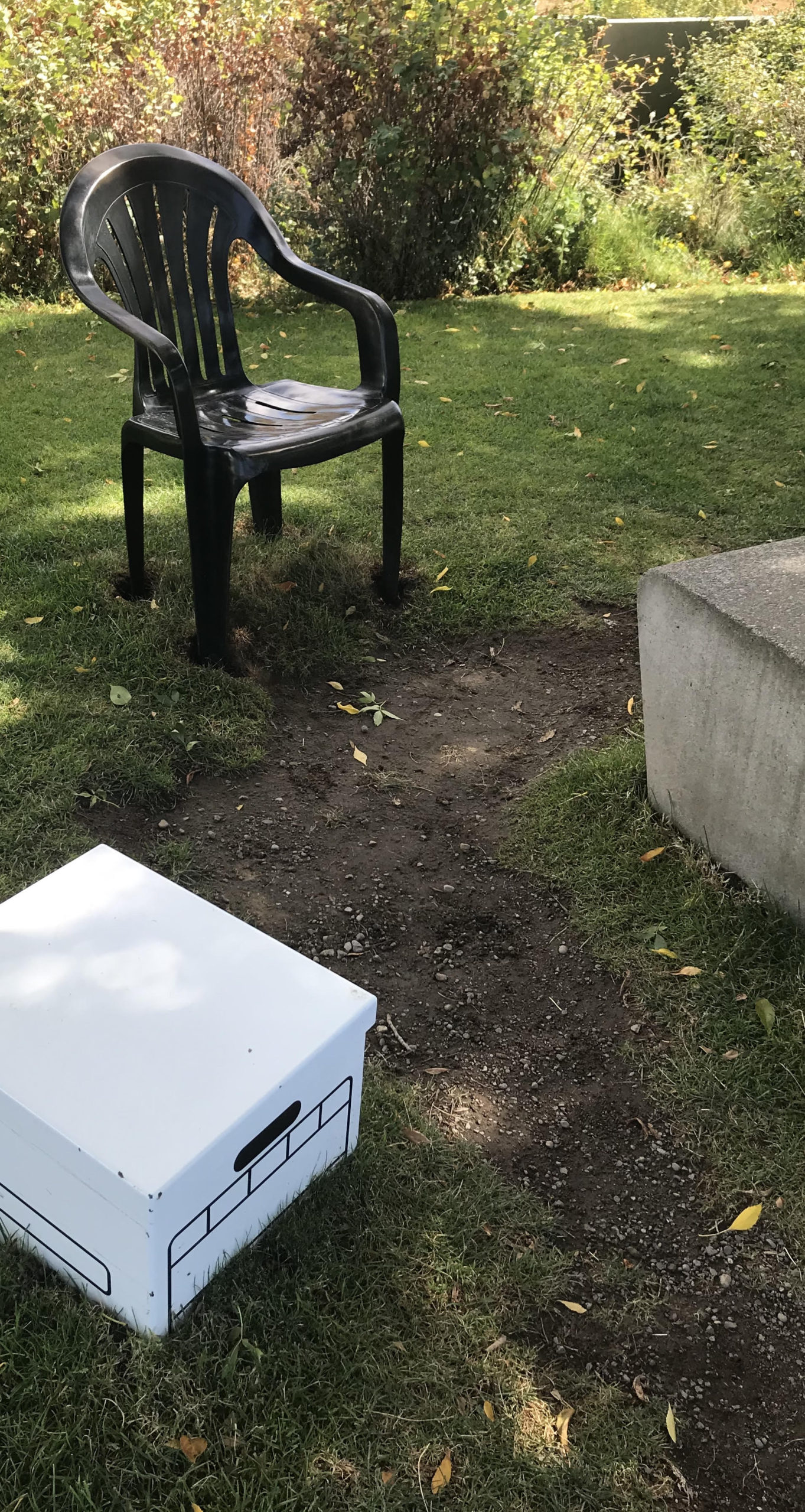
I mentioned in previous posts that one of my favorite places to visit is the Olympic Sculpture Garden in Seattle. I have walked through the garden on numerous occasions and until recently did not identify the work shown here as an art installation. A grouping of ubiquitous objects that seemed to be left unattended by someone that stepped away for a moment or perhaps was using the restroom. These common objects are situated under a tree overlooking Elliot Bay and the Olympic Mountains in the distance—an ideal place to sit and enjoy the view. The objects are a small concrete bench, a plastic lawn chair cast in bronze and a cardboard file box made of metal and coated in porcelain enamel. It is an untitled work by Seattle-based artist, designer, furniture maker and architect Roy McMakin. It is interesting to note the well-worn path between the three objects—the shadow of human curiosity.
Many of McMakin’s sculptures are inspired by American vernacular furniture, and with a hint of humor he bridges the gap between space, art and design. Meticulously crafted, he changes the scale and materials of common items to uncover the point when the item is no longer useful. At that moment our relationship and understanding of the particular object shifts. McMakin poses a compelling question: “If it’s built like a table and looks like a table but doesn’t exactly work like a table, can it still be a table?” His approach has been described as having “termite art tendencies”—gnawing at the margins of a subject over time. His body of work methodically explores the relationship between function, objects and language. Rather than placing everyday vernacular objects onto a pedestal, like most pop artists, he pulls fine art into the everyday.
